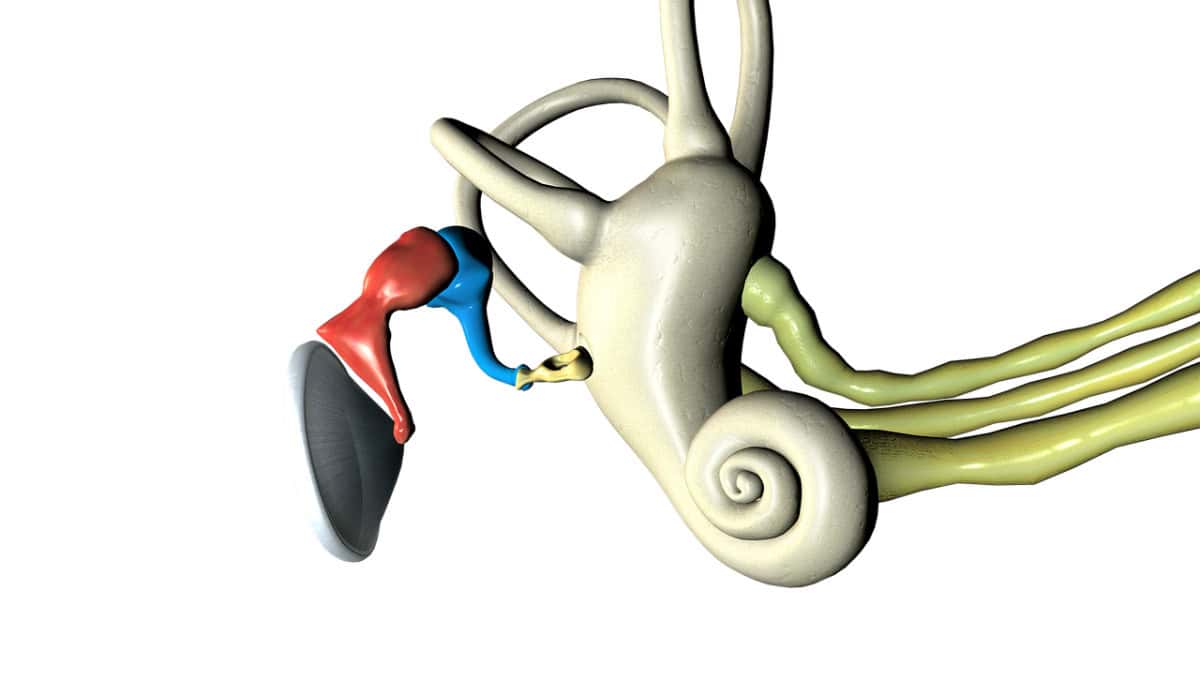A Comprehensive Overview and Its Functions
The ear is a complex sensory organ pivotal not only for hearing but also for maintaining equilibrium, making it one of the most intricate systems in the human body. Composed of the external ear, middle ear, and inner ear, each section plays a crucial role in converting sound waves into electrical signals that the brain interprets as sound. The anatomy of the ear allows it to capture sound waves, amplify and transmit them through tiny bones in the middle ear, and finally convert them into electrical impulses in the inner ear, a process essential for auditory perception.
The inner ear houses the cochlea, a spiral-shaped structure responsible for converting vibrations into electrical signals, and the vestibule and semicircular canals, which are key to spatial orientation and balance. Within these structures, the tiny hair cells translate physical vibrations into electrical impulses that are sent to the brain. Moreover, the utricle and saccule play a vital role in detecting linear acceleration, while the semicircular canals are sensitive to angular acceleration, both critical for maintaining balance and spatial awareness.
The ear canal serves as the gateway for sound waves to enter the ear, leading them to the eardrum which vibrates in response. These vibrations are then amplified by the ossicles, a trio of tiny bones in the middle ear, and transmitted into the air-filled chamber of the tympanic cavity. This careful orchestration ensures that sound waves are effectively converted into a format understandable by our brain, highlighting the ear’s remarkable efficiency as a receiver and translator of sound.
Understanding the anatomy of the ear and its functions underscores the marvel of human biology. Each component, from the visible auricle to the intricate inner workings of the cochlea and the balance-maintaining vestibule and semicircular canals, works in harmony to enable the senses of hearing and balance. These processes, intricate and precise, allow individuals to navigate and interpret their environment, emphasizing the ear’s critical role in daily life and well-being.
Introduction to Ear Anatomy
Delving into the ear’s anatomy reveals a fascinating journey from the external components visible to the naked eye, to the hidden intricacies that allow us to hear and maintain balance. At the forefront of this journey is the external ear, including the auricle and the ear canal, which captures sound waves and directs them inward. Beyond this gateway lies the middle ear, home to the tiny bones that amplify sound vibrations, and the inner ear, where these vibrations are transformed into electrical impulses that the brain can interpret.
This initial overview sets the stage for a deeper exploration of each part’s unique structure and function. By understanding the ear’s anatomy, you gain insight into how sound travels through different mediums within the ear and how this complex organ maintains our equilibrium, responding to both gravitational forces and movements. Such knowledge not only fascinates but also enhances our appreciation for the delicate balance and efficiency of the human body’s sensory systems.
The Importance of Understanding Ear Structure
Understanding the structure of the ear is paramount for several reasons. Primarily, it enables individuals to appreciate how sound is captured, processed, and interpreted by the brain, a marvel of biological engineering. This knowledge is crucial not only for academic or professional pursuits within healthcare and audiology but also for recognizing signs of ear health issues early on. By knowing how the ear functions, you can better understand and describe symptoms, aiding in timely diagnosis and treatment.
Beyond health implications, knowledge of ear anatomy enriches one’s understanding of human biology and the complexities of our sensory organs. It fosters a deeper appreciation for the nuances of hearing and balance, integral components of our daily lives that we often take for granted. Whether it’s enjoying music, engaging in conversation, or simply maintaining balance while moving, the ear’s intricate design plays a critical role, making an understanding of its structure both fascinating and invaluable.
A Brief History of Ear Anatomy Discoveries
The study of ear anatomy has evolved significantly over centuries, from the early anatomists of ancient Greece to the pioneers of modern medicine. Initially, the understanding of the ear’s structure was rudimentary, focusing mainly on the visible parts. However, as medical science progressed, so did the depth of knowledge regarding the ear’s internal mechanisms. Key discoveries, such as the identification of the cochlea and the vestibular system, revolutionized the understanding of how we hear and maintain balance.
Technological advancements, including the invention of the microscope, played a pivotal role in these discoveries, allowing scientists to observe the ear’s minute structures for the first time. Throughout history, each breakthrough has built upon the last, leading to a comprehensive understanding of ear anatomy that continues to grow. Today, ongoing research delves into the cellular and molecular workings of the ear, promising new insights and potential treatments for hearing and balance disorders, a testament to the enduring fascination and importance of this field.
The External Ear: Gateway to Sound
The external ear serves as the primary entrance for sound waves, funneling them towards the deeper structures of the ear where they can be processed. This part of the ear is not only visible but also uniquely designed to capture sound efficiently. From the distinct shape of the auricle that helps in gathering sound waves to the ear canal that directs these waves to the eardrum, the external ear is the first, critical step in the complex process of hearing. Its role in filtering and amplifying sound makes it an indispensable component of the auditory system.
Auricle: The Visible Part of the Ear
The auricle, or pinna, is the part of the ear that most people are familiar with. Its distinctive shape serves a key function in hearing, as it helps to collect sound waves from the environment and direct them into the ear canal. The shape of the auricle is designed to enhance this process, with its curves and folds acting to funnel sound waves efficiently towards the ear drum. This natural amplification and direction of sound are essential for effective hearing, demonstrating the auricle’s crucial role in the auditory system.
Moreover, the auricle’s structure, including features like the helix, triangular fossa, and lobule, not only contributes to its ability to guide sound but also plays a part in localizing the source of sounds. This ability to determine where a sound is coming from is vital for human communication and survival, showcasing the auricle’s importance beyond its role in sound transmission.
External Acoustic Meatus: Pathway to the Middle Ear
The external acoustic meatus, more commonly known as the ear canal, plays a pivotal role in hearing. It links the middle ear with the external environment, allowing sound waves to reach the eardrum. This canal is not just a simple tube; its structure is designed to protect the eardrum and enhance the sound that travels through it. The auricle and external acoustic meatus work in tandem, ensuring that sound is effectively channeled to the eardrum, where the process of converting these sound waves into vibrations begins.
Additionally, the ear canal consists of the auricle, which acts in parallel to the helix, and includes features such as the triangular fossa, contributing to the ear’s overall ability to capture and direct sound. The tympanic plexus and auricular nerve supply the canal, indicating its complexity and the importance of its innervation for both transmitting sound and protecting the inner ear from external harm.
Tympanic Membrane: The Vibrating Barrier
The tympanic membrane, or eardrum, stands as the vibrating barrier between the external and middle ear. It plays a crucial role in hearing by converting the sound waves that reach it into mechanical vibrations. The tympanic membrane is divided into two main parts: the pars tensa and the pars flaccida, each contributing to its ability to vibrate in response to sound. The integrity of this membrane is vital for effective hearing, as any damage can significantly affect one’s ability to hear.
The eardrum’s position, just superior to the umbo and at the end of the external auditory canal, allows it to effectively capture sound waves. The presence of the chorda tympani nerve, a branch of the facial nerve, near the aspect of the tympanic membrane, emphasizes the complex interplay of structures in the ear’s anatomy that enable hearing. This intricate arrangement ensures that sound waves are efficiently transmitted to the auditory ossicles, marking the beginning of their journey through the middle ear.
Supporting Structures: Muscles and Vasculature
The ear’s ability to hear and maintain balance is supported by an intricate network of muscles and vasculature. These structures not only provide the necessary blood supply but also play a role in protecting the ear from damage by modulating the tension on the tympanic membrane and the position of the tiny bones within the middle ear. This careful regulation ensures the ear’s mechanisms work harmoniously, allowing for precise hearing and balance maintenance.
Innervation: How the External Ear Communicates with the Brain
The external ear’s communication with the brain is facilitated through a complex network of nerves. These nerves carry signals from the ear to the brain, where they are interpreted as sound. This process begins when sound waves are captured by the auricle and transmitted through the ear canal to the eardrum, causing it to vibrate. The sensory information from these vibrations is then converted into electrical signals by the inner ear and sent to the brain via the auditory nerve.
This innervation is crucial for the perception of sound and the ear’s protective mechanisms, such as the acoustic reflex that helps to protect the inner ear from potentially damaging noises. The intricate innervation of the ear underscores the complexity of its anatomy and its essential role in both hearing and the body’s overall sensory system, highlighting the sophisticated communication pathways that enable our sense of hearing.
The Middle Ear: Conductor of Vibrations
The middle ear acts as a conductor of vibrations, playing a key role in the process of hearing. It houses the tiny bones known as the ossicles, which amplify sound vibrations received from the eardrum before passing them to the inner ear. This amplification is crucial for converting sound waves into a form that can be further processed by the inner ear, showcasing the middle ear’s vital role in the auditory system.
Tympanic Cavity: An Air-Filled Chamber
The tympanic cavity, an air-filled chamber located in the middle ear, is a central part of the ear’s anatomy. It houses the auditory ossicles, the tiny bones that play a critical role in hearing. This chamber is directly connected to the internal ear, allowing for the transmission of sound vibrations from the eardrum to the cochlea. The aspect of the tympanic membrane that faces this cavity is crucial for initiating the process of sound transmission.
This cavity’s air-filled nature is essential for allowing the auditory ossicles to vibrate freely, amplifying the sound waves that reach the middle ear. The precise arrangement and function of the tympanic cavity and its contents underscore the complexity of the ear’s anatomy and its efficiency in transmitting sound, highlighting the sophisticated mechanisms that facilitate our ability to hear.
Auditory Ossicles: Malleus, Incus, and Stapes
In the human body, the middle ear holds three tiny bones known as the auditory ossicles. These bones, named the malleus (hammer), incus (anvil), and stapes (stirrup), work together to transmit sound vibrations from the outer ear to the inner ear. As sound waves enter the ear, they hit the tympanic membrane (eardrum), causing it to vibrate. These vibrations are then picked up by the malleus, transferred to the incus, and finally to the stapes, which connects to the inner ear structures, amplifying the sound and allowing you to hear.
Muscles and Ligaments of the Ossicles
The auditory ossicles are intricately connected to the rest of the middle ear through a series of muscles and ligaments. The tensor tympani muscle attaches to the malleus, while the stapedius muscle connects to the stapes. These muscles contract reflexively in response to loud sounds, stabilizing the ossicles and reducing the transmission of potentially damaging vibrations to the internal ear. This reflex helps protect the delicate inner ear structures from injury caused by loud noises.
Ligaments also play a crucial role in the positioning and function of the ossicles. They secure these bones in place, ensuring precise alignment for the effective transmission of sound vibrations. The ligaments provide a delicate balance, allowing the ossicles to move with enough flexibility for sound transmission while maintaining their alignment within the tympanic cavity for optimal auditory function.
Eustachian Tube: Balancing Air Pressure
The Eustachian tube is a vital component of the middle ear that helps balance air pressure on both sides of the tympanic membrane. This tube connects the tympanic cavity to the back of the throat and opens during swallowing or yawning, equalizing the pressure and ensuring the eardrum can vibrate freely. Proper functioning of the Eustachian tube is essential for clear hearing and to prevent discomfort or potential damage to the ear structures.
Vasculature and Innervation: Supplying the Middle Ear
The middle ear, including the tympanic cavity, is supplied with blood through a network of small arteries and veins. This vasculature is critical for delivering nutrients and oxygen to the tissues of the middle ear and for removing waste products. Additionally, the middle ear is richly innervated, receiving sensory and motor nerve supply that enables the muscles of the auditory ossicles to contract and protects the ear from damage by loud sounds.
Nerve supply also plays a role in transmitting sensations of pain, pressure, and temperature from the middle ear to the brain, helping to monitor the health and status of the ear. This intricate system of vasculature and innervation ensures the middle ear functions effectively, contributing to the complex process of hearing and balance.
The Inner Workings of the Inner Ear
The inner ear is a complex system responsible for converting sound vibrations into electrical signals that the nerve to the brain can interpret, and for helping to maintain balance. It contains the cochlea, which is involved in hearing, and the vestibular system, which assists in balance. Loud sounds can damage the delicate structures within, leading to sensorineural hearing loss. The auditory information is transmitted via the eighth cranial nerve, highlighting the inner ear’s essential role in our ability to hear and navigate our environment.
Bony Labyrinth: The Rigid Outer Shell
The bony labyrinth is the rigid, outer shell of the inner ear that houses the delicate structures responsible for hearing and balance. It consists of three main parts: the cochlea, vestibule, and semicircular canals. This hard structure protects the inner workings of the ear and contributes to the complex process of sound transmission and balance maintenance.
Vestibule, Semicircular Canals, and Cochlea
The vestibule serves as the central part of the bony labyrinth, acting as the entry point for sound vibrations and playing a key role in balance. The semicircular canals, attached to the vestibule, are crucial for detecting head movements and maintaining equilibrium. Each canal is filled with fluid and lined with sensory cells that detect movement, allowing you to keep your balance as you move through space. The cochlea, a spiral-shaped structure, is where sound vibrations are converted into nerve signals that your brain can understand.
These components work together to create a comprehensive sensory system. The vestibule and semicircular canals are part of the vestibular system, which monitors the position and movement of your head in space, while the cochlea focuses on hearing. This division of labor ensures that the inner ear can effectively handle both the demands of hearing and balance, making it a key player in how you interact with your environment.
Membranous Labyrinth: The Fluid-Filled Tubes
The membranous labyrinth is a collection of fluid-filled tubes and sacs located within the bony labyrinth, functioning as the sensory organ of the inner ear. It includes structures such as the utricle and saccule, which are essential for balance and spatial orientation, and the cochlear duct, which is involved in hearing. These fluid-filled structures allow for the transduction of sound vibrations and head movements into electrical signals that the brain can interpret, playing a critical role in both hearing and the vestibular apparatus.
Utricle, Saccule, and Cochlear Duct: Sensing Gravity and Sound
The utricle and saccule are specialized parts of the inner ear that sense gravity and linear movements, such as forward motion or vertical changes like jumping or squatting. They contain tiny crystals suspended in a gel-like substance over hair cells. When you move, these crystals shift, stimulating the hair cells and sending signals through the ear canal to the brain about your body’s position. This helps you maintain balance and understand your spatial orientation.
The cochlear duct, part of the scala tympani, plays a pivotal role in hearing. It is where sound vibrations are transformed into electrical impulses. As sound waves travel through the ear, they cause the fluid inside the cochlear duct to move, stimulating hair cells that convert these vibrations into nerve signals. These signals are then transmitted to the brain, allowing you to perceive sound. Together, the utricle, saccule, and cochlear duct form an intricate system that senses gravity, acceleration, and sound, providing critical information to help you interact with your environment.
The Role of the Semicircular Canals in Balance
When you turn your head, the semicircular canals in your inner ear help you keep your balance. These three tiny, looped tubes are filled with fluid and lined with hair-like sensors that move with the fluid. This movement tells your brain about your head’s position. It’s a key part of maintaining balance, allowing you to walk, run, and move without falling over.
Each canal is oriented at a different angle to cover all directions of movement. When the fluid inside these canals shifts, it pushes against the sensors, sending nerve carries signals to your brain. This process helps your brain understand how your head is moving. Without this system working properly, you might feel dizzy or lose your balance easily.
How We Hear: Sound Transmission Explained
Sound waves enter your ear canal, hitting the eardrum and causing it to vibrate. These vibrations are then transferred to the three tiny bones in the middle ear known as the ossicles. The ossicles amplify these vibrations and send them to the inner ear, specifically to the cochlea, which is filled with fluid and lined with thousands of tiny hair cells.
As the vibrations cause the fluid in the cochlea to ripple, the hair cells move, creating electrical signals. The auditory nerve then carries these signals to the brain, which interprets them as sound. This complex process allows you to hear everything from music to conversations, and even the subtlest of sounds in your environment.
From Air Waves to Nerve Signals
The journey of sound starts when air waves, created by something like a ringing phone or a barking dog, enter your ear canal. These waves make their way to the eardrum, causing it to vibrate. The beauty of your auditory system is that it can convert these mechanical vibrations into something your brain can understand: electrical signals.
Once the vibrations reach the cochlea, they prompt the hair cells to bend and stretch, generating electrical impulses. The auditory nerve is responsible for picking up these impulses and carrying them to your brain. It’s here, in the brain, that these signals are decoded into recognizable sounds, allowing you to understand and react to the world around you.
The Cochlea: Transducing Vibrations into Electrical Signals
The cochlea, a spiral-shaped part of the inner ear, plays a crucial role in hearing. When sound vibrations from the ear canal reach the cochlea, they travel through the scala tympani, one of three parallel canals in the cochlea, causing the fluid inside to move. This movement activates the hair cells resting on the basilar membrane, a structure inside the cochlea.
As these hair cells are stimulated, they transform the mechanical energy of sound waves into electrical signals. These signals are then sent to the brain via the auditory nerve. This intricate process is what allows you to distinguish between different sounds, from the softest whisper to the loudest roar, and everything in between.
Maintaining Equilibrium: The Vestibular System
Your body’s ability to maintain balance and navigate the world relies heavily on the vestibular system in your inner ear. This complex system includes the semicircular canals, which detect rotational movements, and the otolith organs, which sense linear accelerations. Together, they provide continuous feedback to your brain about your body’s position and movement.
By interpreting signals from these structures, your brain can make the necessary adjustments to your posture and gaze to maintain equilibrium. Whether you’re standing still, walking, or performing complex movements, the vestibular system plays a critical role in helping you keep your balance and orientation.
Semicircular Canals: Detecting Head Movements
The semicircular canals are three loop-shaped structures in your inner ear that play a vital role in detecting head movements. Each canal is filled with fluid and has small, hair-like sensors that respond to fluid motion. As you move your head, the fluid inside the canals moves, stimulating these sensors. This action sends signals to your brain, helping it understand your head’s movement in space.
This information is crucial for maintaining balance and coordinating eye movements. Without the input from the semicircular canals, simple tasks like walking, turning, or even standing might become challenging. They ensure that even with the slightest head movement, your body can react appropriately to maintain stability.
Otolith Organs: Sensing Linear Accelerations
The otolith organs, consisting of the utricle and the saccule, are essential for detecting linear accelerations, such as moving forward or upward. These organs contain tiny crystals that move in response to changes in speed or direction. The movement of these crystals pulls on hair cells, creating signals that are sent to the brain.
This information about linear acceleration is critical for you to understand your body’s position relative to gravity and motion. Whether you’re in an elevator going up or accelerating in a car, the otolith organs help your brain process these movements, allowing you to maintain your balance and orientation.
Disorders and Clinical Applications
Understanding the ear’s anatomy not only sheds light on how we hear and maintain balance but also helps in diagnosing and treating various ear disorders. Conditions like ear infections, swimmer’s ear, deafness, and tinnitus can significantly impact your quality of life. By exploring the ear’s intricate structures, medical professionals can develop more effective treatments and diagnostic tools.
From prescribing antibiotics for an ear infection to recommending hearing aids or cochlear implants for those with hearing loss, the advancements in medical science have greatly improved the management of ear conditions. Early diagnosis and intervention are key to preventing long-term damage and maintaining healthy hearing and balance.
Common Ear Conditions: Infections, Deafness, and Tinnitus
Ear infections and swimmer’s ear are common conditions that can cause discomfort and affect your hearing. An ear infection occurs when fluid builds up in the middle ear, leading to inflammation and pain. Swimmer’s ear, on the other hand, is an infection of the ear canal caused by water remaining in your ear, creating a breeding ground for bacteria.
Deafness and tinnitus are other prevalent ear conditions. Deafness may result from genetic factors, exposure to loud noises, or age-related wear and tear on the ears. Tinnitus, characterized by ringing or buzzing in the ears, can be a symptom of various underlying conditions. These conditions highlight the importance of protecting your ears and seeking timely treatment.
Diagnostic Approaches: From Otoscopy to Audiometry
Diagnosing ear conditions involves a range of approaches, from simple visual examinations to complex auditory tests. An otoscopy allows doctors to look into your ear and check for signs of infection, blockage, or damage. Audiometry tests, on the other hand, assess your hearing capabilities by having you listen to sounds at various volumes and frequencies.
These diagnostic tools are crucial for identifying the specific cause of hearing loss or discomfort. By understanding the nature of the problem, medical professionals can recommend the most effective treatment, whether it’s medication, surgery, or hearing aids.
The Impact of Technology on Ear Health: Hearing Aids and Cochlear Implants
Technological advancements have revolutionized the treatment of hearing loss and other ear conditions. Hearing aids have become more sophisticated, offering clearer sound quality and connectivity options. For those with severe hearing loss, cochlear implants can bypass damaged parts of the ear and directly stimulate the auditory nerve.
These devices rely on the basilar membrane’s ability to translate vibrations into electrical signals that the brain can understand. With the help of technology, individuals with hearing impairments can experience improved communication and a better quality of life. It’s a testament to the power of innovation in enhancing ear health and hearing.
A Final Note on Ear Care and Prevention
Taking care of your ears is crucial for maintaining your hearing and balance throughout your life. Regular check-ups can help detect any issues early on, allowing for timely treatment. Protecting your ears from loud noises, keeping them clean, and avoiding inserting objects into your ear canal are simple yet effective ways to prevent damage.
Remember, your ears play a vital role in your daily life, from enabling communication to ensuring you can move safely. By following practical tips and advice for ear care, you can help preserve your hearing and overall well-being. Embrace the complexity of your ear’s anatomy and treat it with the care it deserves.
Regular Check-ups and the Importance of Early Diagnosis
Regular check-ups play a pivotal role in maintaining the health of your ears. By routinely visiting a healthcare professional, potential issues can be identified and addressed before they escalate into more serious conditions. Early diagnosis of ear disorders, such as infections or hearing loss, significantly enhances the effectiveness of treatment. It’s crucial to catch these conditions early, as delays can lead to complications or permanent damage.
Moreover, screenings during check-ups can uncover hidden problems, even in the absence of symptoms. For instance, audiometric tests can reveal the onset of hearing loss not yet noticeable to you. This proactive approach allows for timely interventions, such as lifestyle adjustments or therapeutic measures, to prevent further deterioration of your hearing health. Always prioritize these examinations, much like you would for any other aspect of your health.
Protecting Your Hearing: Practical Tips and Advice
To safeguard your hearing, it’s essential to minimize exposure to loud noises, one of the leading causes of hearing damage. When engaging in activities that involve high noise levels, such as attending concerts or operating machinery, wearing protective earplugs or earmuffs can significantly reduce the risk of hearing loss. These simple devices can dampen the intensity of sound reaching your ears, protecting the delicate structures within.
Additionally, maintaining a healthy lifestyle contributes to overall ear health. Regular exercise and a balanced diet support the circulatory system, ensuring the organ of hearing and balance, filled with fluid, functions optimally. Avoid inserting foreign objects into your ears, as this can lead to infections or damage to the eardrum. By following these practical steps, you can help preserve your hearing for years to come.
Conclusion: Embracing the Complexity of Ear Anatomy
The anatomy of the ear is a masterful design, intricate and finely tuned to perform the complex tasks of hearing and balance. Understanding this complexity not only fascinates but also emphasizes the importance of taking care of this vital organ. The ear’s ability to convert sound waves into impulses to the brain, allowing us to communicate and interact with our environment, is nothing short of miraculous.
As we continue to explore and learn about the ear’s structure and functions, we gain insights into improving hearing health and treating disorders. Embracing the ear’s complexity encourages us to appreciate its capabilities and the critical role it plays in our daily lives, prompting us to adopt practices that support its well-being.
The Continuous Evolution of Our Understanding
Our comprehension of ear anatomy has evolved significantly over the years, thanks to advancements in medical science and technology. From the earliest studies to the latest research, each discovery has contributed to a deeper understanding of how the ear functions. This ongoing journey of exploration has led to innovative treatments and interventions for hearing loss and balance disorders, improving the quality of life for countless individuals.
The evolution of our understanding emphasizes the importance of continued research and education. As we uncover more about the ear’s intricate workings, we can develop more effective strategies for prevention, diagnosis, and treatment of ear-related conditions. This commitment to learning and discovery holds the promise of even greater breakthroughs in the future.
How Ear Anatomy Influences Daily Life and Well-being
The anatomy of the ear, an organ of hearing and balance, profoundly impacts our daily life and well-being. It enables us to communicate with others, enjoy music, and stay oriented in our environment. The ear’s design, filled with fluid, plays a crucial role in converting vibrations into electrical signals, which our brain interprets as sound. This process allows us to interact with the world around us in meaningful ways.
Beyond hearing, the ear’s balance function is essential for maintaining posture and coordination. Disruptions in this system can lead to dizziness and falls, affecting our ability to perform everyday activities. Therefore, understanding and caring for our ears is not just about preventing hearing loss; it’s about ensuring our overall quality of life. By valuing and protecting our ear health, we support our ability to communicate, engage with our surroundings, and live life to its fullest.






